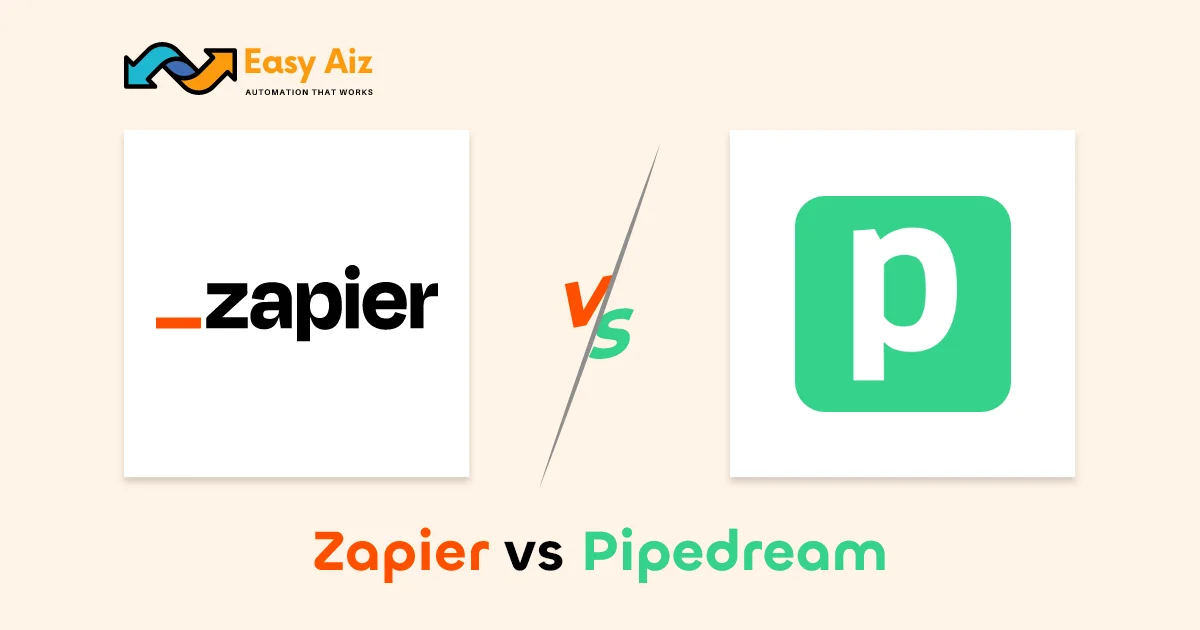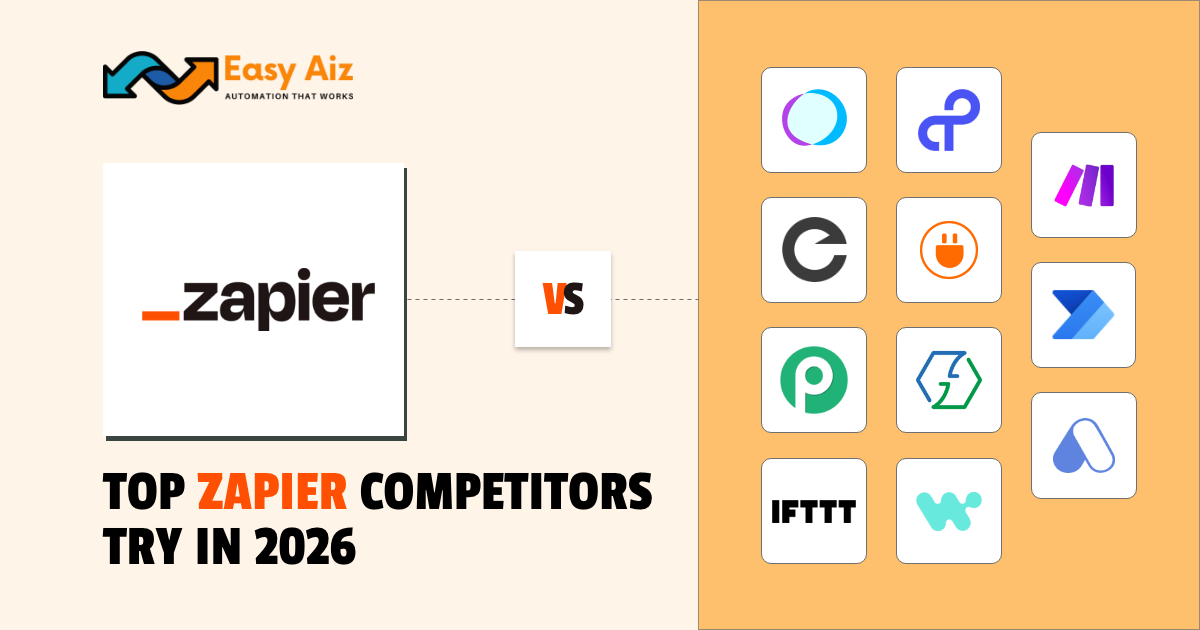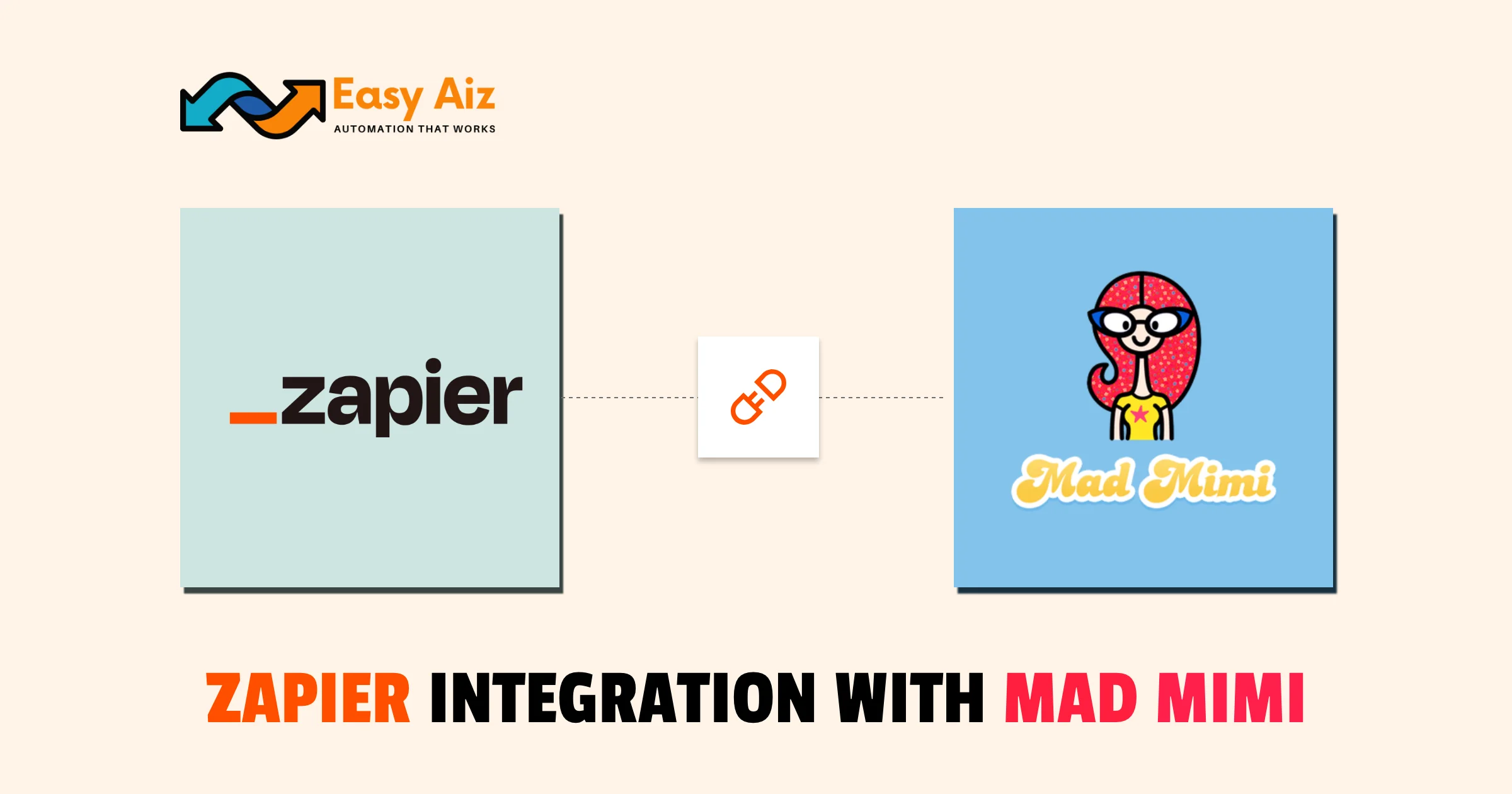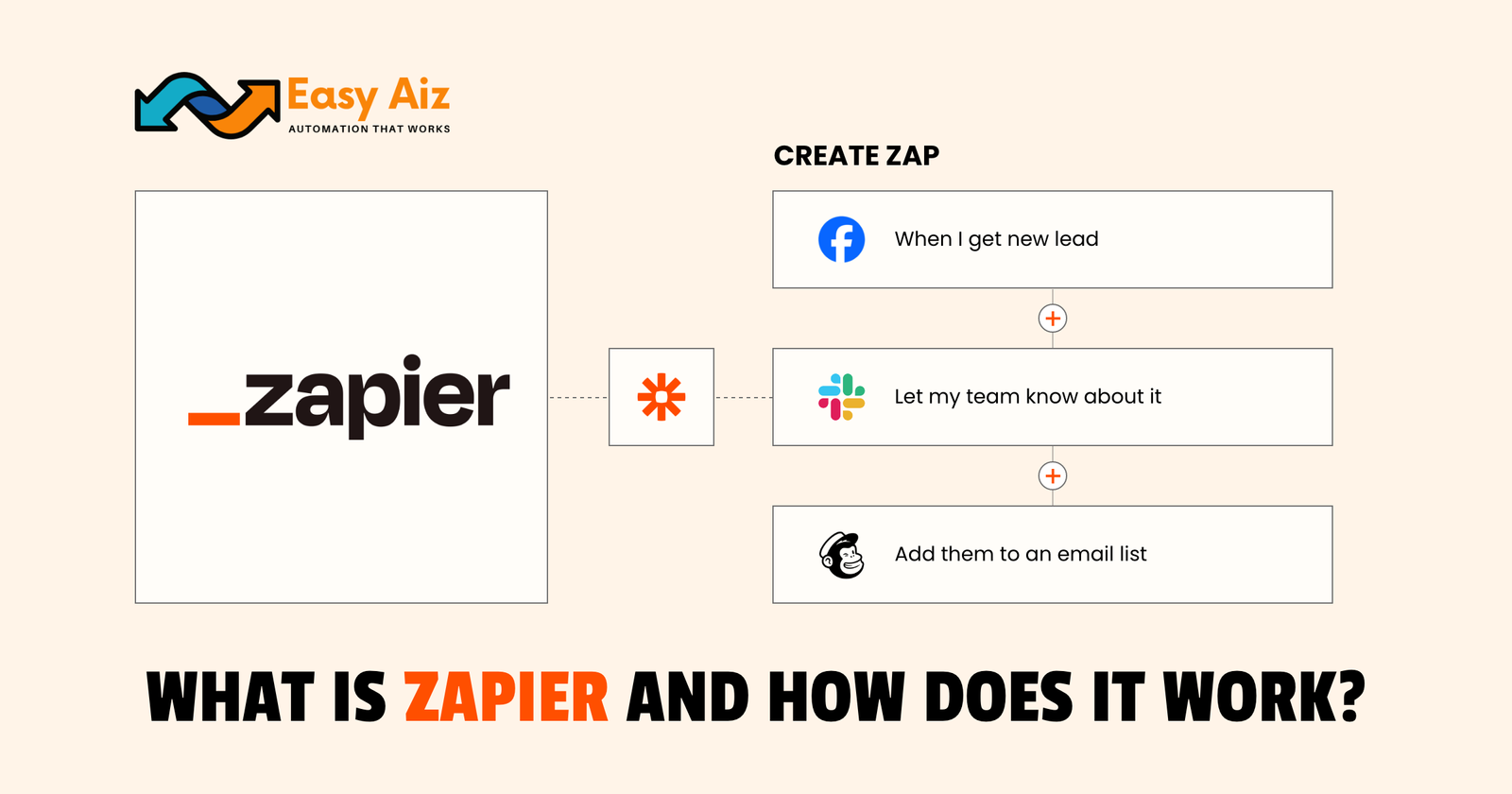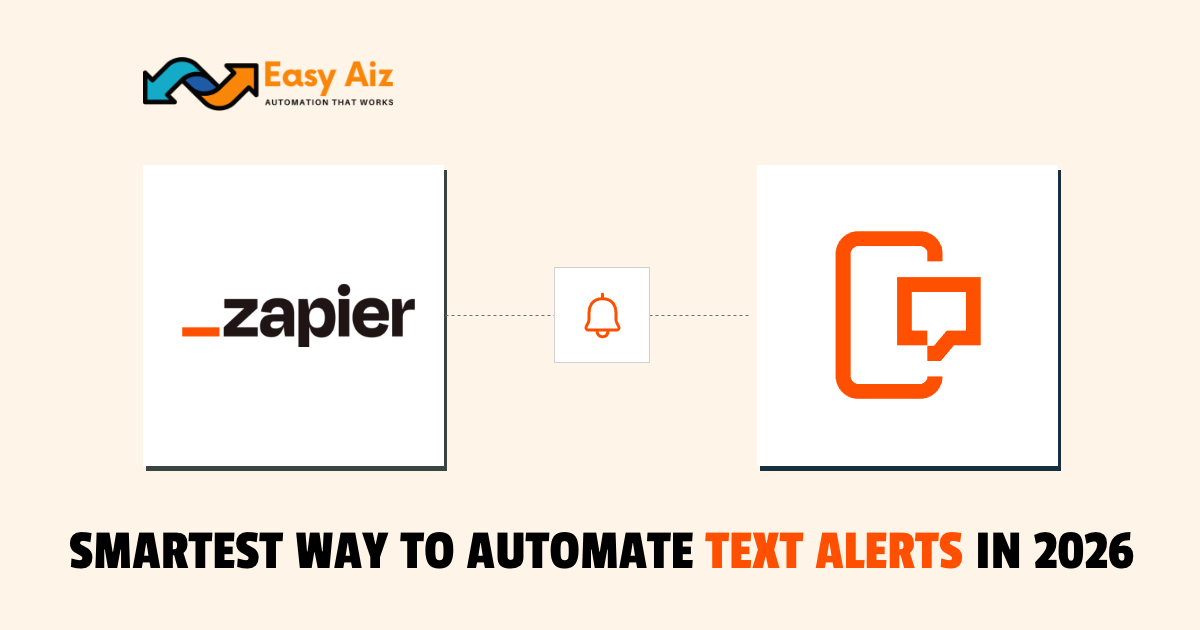Table of Contents
Zapier vs Pipedream: Choose The Best Tool For Your Business
Key Takeaways
- Both are big names in automation. Zapier is easy to use, while Pipedream offers more customization with code.
- Zapier connects 7,000+ apps with simplicity. Pipedream focuses on code-driven automation for control.
- Zapier is user-friendly and easy to use. Pipedream allows advanced customization but has fewer built-in connections.
- Zapier is beginner-friendly. Anyone can use it, but Pipedream requires coding knowledge.
- Zapier has a vast library of applications. Pipedream lets you use code for custom connections and event-driven automation.
Automating your work processes can make all the difference. Both Zapier and Pipedream are big names in the automation game. With these tools, users can reduce jobs, boost output, and simplify complicated processes. But which tool will work best for you? In this article, we will compare Zapier vs Pipedream in depth so you can make an educated choice for your automation journey.
Zapier: The Trailblazer
Zapier has been around since 2011, making it a veteran in automation. With over 7,000+ app integrations, everyone and every business should choose it. Think of it as the reliable Swiss Army knife of automation.
Pipedream: The New Kid on the Block
Pipedream, on the other hand, is a new company. It’s the new kid on the block with a unique robotics take. It came out in 2019. The code in Pipedream has a lot of power, making it an excellent choice for writers and tech-savvy users.
Zapier Pros & Cons
Pros
- Zapier is known for having a friendly interface. Making automation processes doesn't require much technical know-how. Putting the pieces together is all it takes.
- Zapier is a flexible choice for people in various businesses. You can find apps that work with it in project management, sales, and marketing.
- Zapier is great for people who aren't coders. You can make automation work very well without any code.
- Zapier is a safe and stable tool that has been around for a long time and has many users.
- Zapier is GDPR-compliant and takes data protection very seriously. It keeps your information safe.
Cons
- Zapier has a lot of pre-built links, but if you need complicated programming, Pipedream is better because it lets you customize it more.
- Although the free plan has some features, you'll need to pay for a plan to get the most out of Zapier. It can be pricey for businesses that need to automate many tasks.
- Zapier needs extra help with significant, complicated processes, which makes it less ideal for complex automation at the business level.
Pipedream Pros & Cons
Pros
- Pipedream is an excellent place for programmers to spend time. It lets you write your code to make particular software processes to your needs.
- Pipedream is great at event-driven automation, making it perfect for complicated situations where you must react to many events simultaneously.
- Because Pipedream is so flexible, you can make complex processes and fully control the whole process.
- You can keep your data in Pipedream, which can be a big plus for people with strict data control rules.
Cons
- Pipedream can be expanded with code but has fewer built-in connections than Zapier. Please make your connections for specific apps.
- Pipedream depends on its community for much help. It doesn't have specialized customer service, which can be a problem if you need help immediately.
- People who like visual tools or need to know how to code find the app more complicated to use because it focuses on code.
Zapier vs Pipedream: Ease of Use
Zapier: Your Grandma Can Use It
You don’t need to be an expert to create “Zaps” (automation workflows), It is known for its user-friendly interface. It’s as easy as connecting the dots. If you can follow a recipe, you can create a Zap.
Pipedream: A Coder’s Playground
Pipedream is more developer-centric. While it offers a visual workflow builder, it allows you to write custom code to create advanced automation. If you’re a developer, you’ll feel right at home here. Learning takes longer for people who could be better with technology.
Zapier vs Pipedream: Integration Game
Zapier: A Vast Ecosystem
The best feature of Zapier is its vast app library. It meets many needs because it can connect to thousands of apps. Zapier can help you with marketing, sales, or project management.
Pipedream: Extensible with Code
Pipedream has fewer built-in integrations than Zapier, but it makes up for it by letting you use code to make your connections. There are many options if you are ready to get your hands dirty.
Zapier vs Pipedream: Integration Process
How to Use Zapier
- Go to the Zapier website.
- Click on “Sign Up” and create your account. You can start with a free plan or choose a paid plan for more advanced features.
- Log in to your Zapier account.
- Click on “Make a Zap” to begin the automation process.
- Select the app that will trigger the automation. For example, you can choose “Gmail” as the trigger app.
- Define the associated event trigger, such as when a “New Email” is received.
- Link your Gmail to Zapier through the prompts given.
- Then, test to ensure the connection works properly.
- Choose the action app that you want the data to go to, such as “Google Sheets” to save email information.
- Configure the action event, like “Create Row.”
- Map the data from your trigger app to the action app. For example, map the sender’s email address to a column in Google Sheets.
- Test the action to ensure it’s working as expected.
- Give your automation a name.
- Turn on the Zap, which will start automatically when the trigger event occurs.
- Monitor your Zaps in the Zapier dashboard.
- Edit or add new actions to your Zaps as your needs evolve.
How to Use Pipedream
- Visit the Pipedream website.
- Sign up for an account. Pipedream offers a generous free plan to get you started.
- After logging in, click “Create a Workflow” to start building your automation.
- Select the trigger event for your workflow. Pipedream supports trigger types like HTTP requests, timer schedules, and third-party app events.
- Configure the trigger settings. For example, set the endpoint URL and authentication if you’re using an HTTP request trigger.
- Add one or more steps to your workflow. These can be code steps or third-party app integrations.
- Write custom code if needed or choose from pre-built actions for popular apps.
- Test your workflow to ensure it’s working correctly.
- Deploy the workflow to make it live and start automating tasks.
- Keep an eye on your workflows from the Pipedream dashboard.
- Edit, add, or delete steps as your automation needs to change.
Combining Zapier vs Pipedream
You can use both Zapier and Pipedream together for comprehensive automation. Here’s how:
Obtain an established Zap to be set for simple daily tasks and integrations in Zapier.
Use Pipedream for event-driven complex automation that requires bespoke codewriting.
Then, hook Pipedream and Zapier by either making Pipedream an action app in Zapier or triggering Pipedream workflows from Zapier.
Bear in mind that the choice between Zapier and Pipedream is, in the end, made according to specific needs and how technically proficient your team happens to be. Zapier is suitable for mere automation, while Pipedream is the way to go for any developer who wants to exert control and flexibility over his or her environment.
Pipedream vs Zapier: Automation Logic
Zapier: Simple and Effective
Zapier’s logic is based on a trigger-action model. When a trigger event occurs, it initiates an action. This simplicity is perfect for straightforward automation needs.
Pipedream: Event-Driven Automation
Pipedream excels in event-driven automation. It can respond to various events, making it ideal for complex scenarios. If you need more control and flexibility, Pipedream is your ally.
Zapier vs Pipedream: Pricing
Zapier: Free, But Limited
Zapier’s free plan has basic features, but to unlock the full potential, you’ll need to subscribe to a paid plan, starting at $19.99 per month.
Pipedream: Generous Free Tier
Pipedream is more generous with its free plan, offering 750 monthly credits. Paid plans start at $19 monthly, making it an economical choice.
Zapier Pricing
| Free | Basic | Advanced | Business |
|---|---|---|---|
| $0 USD | $19 USD | $49 USD | $99 USD |
| 750 credits/mo | 2000 credits /mo | 5k tasks /mo | 5k tasks /mo |
| 3 active workflows | 20 active workflows | Unlimited workflows | Run workflows in a dedicated VPC |
| 1,600+ integrated apps | 10 connected accounts | Unlimited connected accounts | Unique static egress IP |
| 5,000+ pre-built components | 1-minute schedule interval | Bi-directional GitHub Sync | 3 custom webhook domains |
| Webhook, schedule + app triggers | No daily usage cap | AI-assisted development | Private Slack channel |
| Node, Python, Bash & Go runtimes | Cost control settings | Premium apps | Premium support |
| Access to npm & PyPI packages | – | Share connected accounts | Require 2FA |
| API request builder | – | Eliminate cold starts | Single Sign-On (SSO) |
| Unlimited users | – | Auto-retry | Restrict Login Methods |
| – | – | Extended event history | – |
| – | – | Concurrency controls | – |
| – | – | Execution rate controls | – |
| – | – | 1-second schedule interval | – |
Pipedream vs Zapier: Scalability
Zapier: Great for Startups
Zapier is a fantastic choice for startups and small businesses. It’s quick to set up and use. However, it needs to be improved when dealing with extensive, complicated processes.
Pipedream: Scalable Powerhouse
Pipedream shines when it comes to scalability. It’s a robust choice for enterprises and businesses with complex automation needs.
Pipedream vs Zapier: Customer Support
Zapier: Reliable Support
Zapier offers email support to its paid plan users. While not the most responsive, it gets the job done.
Pipedream: Community-Driven
Pipedream relies heavily on its community. There is no specialized support, but the active group can help you in essential ways.
Zapier vs Pipedream: Data Handling
Zapier: Secure and Compliant
Zapier takes data privacy seriously. It’s GDPR-compliant and has robust security measures to protect your data.
Pipedream: Control Over Your Data
Pipedream allows you to host your data, giving you more control. It can be a significant advantage for users with strict data governance requirements.
Conclusion
Which one to choose? It depends on what you want. Need a simple, easy-to-use programming tool with many built-in integrations? Use Zapier instead.
On the other hand, if you’re a developer or need advanced event-driven automation, Pipedream is your go-to platform.
In the Zapier vs. Pipedream battle, it’s not about who’s better but about who’s the better fit for you. Take your time to evaluate your requirements and spin both platforms to see which aligns better with your automation goals.
Don’t let the battle between Zapier and Pipedream perplex you; instead, let it empower you to take your automation game to the next level.
Table of Contents
Get started with Easy Aiz
Have any project in mind? Book a free call now to automate your Project !!
More Blogs
Explore top 11 closest Zapier competitors- each offering a unique set of features and facilities.
How to Set Up Zapier Integration with Mad Mimi and Outgrow Zohaib Ali10/07/2025 Table of …
Explore some of the best email marketing softwares in 2025 along with their key features, pros, cons and pricing plans.
SMS by Zapier: The Smartest Way to Automate Your Text Alerts in 2026 Ayan Waraich …
FAQ'S
Many people use both apps together to get the best of both. With Zapier, you can easily connect with Pipedream and do more complicated routines based on events.
